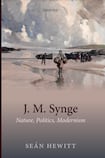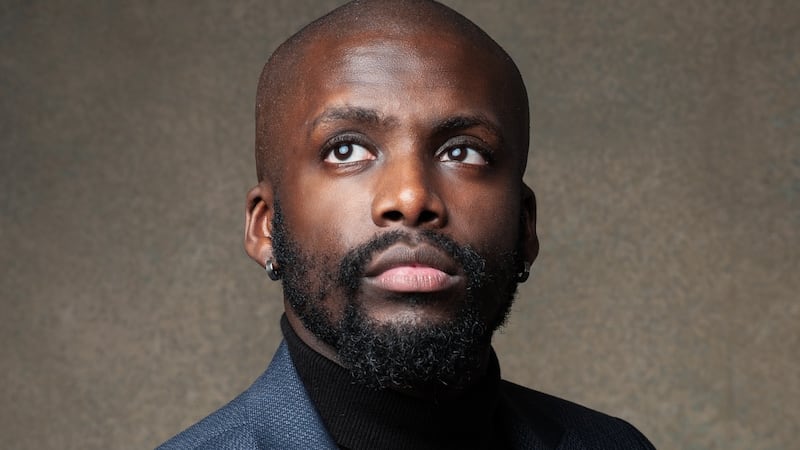
April 16th, 2021 was the 150th anniversary of the birth of John Millington Synge. Synge had a tragically short life, succumbing to Hodgkin’s Disease just shy of his 38th birthday. But his achievement was considerable and the plays in particular have ensured him a lengthy afterlife, as a still potent ghost in the Irish imaginary.
There has been a renewal of scholarly interest in Synge in recent years; but there never have been and never will be that many scholarly monographs on JM Synge. For any scholar who is serious enough to undertake work on Synge is obliged to delve deep into the archive held in the writer’s alma mater, Trinity College, Dublin, and familiarise themselves with the notes, reading lists (Synge was an omnivorous reader), numerous drafts of the plays and prose, letters, etc. Synge gave very little away about his work and was particularly cryptic in his comments, at one point remarking in a letter to The Irish Times during the week of the riots: “There are, it may be hinted, several sides to The Playboy [of the Western World].”
Seán Hewitt’s book clearly demonstrates the extent and range of the research he has undertaken to come at and articulate the writer’s artistic philosophy (something Synge never did himself, as opposed to say Yeats).
Hewitt admits in his introduction that instead of pursuing one topic throughout, “I examine the confluence of various themes in Synge’s work to suggest a broader underlying set of artistic and political concerns”.
The book shows more clearly than most that Synge’s views did not remain static but were modified over time. The writer’s opposition to modernising tendencies on the Aran Islands is less absolute when it comes to the 1905 essays he wrote for the Manchester Guardian on progressive schemes in Connemara: “Synge makes political and aesthetic compromises to accept improvements in living standards which would ordinarily run counter to his fetishization of the natural”.
Synge’s socialist politics came to the fore in the later plays where a “more explicit move into social and political criticism […]is reflected in his decision to anchor The Playboy of the Western World in an identifiably contemporary setting both in terms of time and place”.
Underlying it all is Synge’s love of nature, the pantheism with which he replaced his family’s Protestantism. On page 55, Hewitt quotes from Synge’s Autobiography: “Even at this time I was a worshipper of nature”. The phrase is identified as a direct echo of Wordsworth’s Tintern Abbey, in which the older poet imagines his younger self, “So long/A worshipper of nature.” This is direct quotation rather than echo and shows the extent of the Romantic poet’s influence on Synge.
What are more properly Wordsworthian echoes can be detected elsewhere, such as the description in a prose essay, People and Places, where there is a mirroring of the sea and the sky in scenes of uncanny natural beauty which convey a double perspective. There is, as Hewitt puts it, “a constant passage in the natural world between a purely physical presence and something that appears to link the […]features of the landscape with the sky, and with a mysterious, unseen dimension.” We are not far here from Wordsworth’s ascent of Mount Snowdon at the climax of his autobiographical epic poem, The Prelude.
In a rare theoretical passage (which is quoted), Synge writes of how he believes writers can be divided into two categories: “what is highest in poetry is always reached where the dreamer is reaching out to reality, or where the man of real life is lifted out”. In the Irish context, Synge identifies WB Yeats as the reality-reaching dreamer. No Irish writer is suggested for the other category, but the obvious candidate is Synge himself, the man of real life who is lifted out of it into dreams.
Hewitt supports this reading by focusing on two prose passages where Synge vividly renders his dreams in surrealistic prose. The first is an essay entitled Under Ether, writing what he experienced when he was etherised for an operation on his neck. Hewitt makes the point in the book that Synge never achieved full transcendence, that he was always torn between the two worlds of the real and the ideal. And the experience under ether was much more gut-wrenching than the gentle term “lifted out of it” suggests: “It was agony. My eyes rolled swiftly from one side to the other, seeing now with phantasmal and horrible distortion”.
The one area of The Aran Islands examined in detail is a dream Synge had on Inishmaan, where what is most striking is the loss of physical control and the sense of being moved by an external force. Hewitt is more interested in this atypical passage than the prose work’s more habitual descriptions of the islanders and their activities, since he regards it as a spiritual autobiography rather than an exercise in social realism.
Synge asked his intended Cherrie Matheson whether she had received the telepathic message he sent her just before he underwent the neck operation. She said she had not and Synge’s disappointment was palpable. It is through such accounts as these that Hewitt advances his original claim for Synge as an occultist and a mystic, a solitary scholar rather than a Yeatsian joiner of secret societies.
His early Romanticism gives way to modernism when Synge moves from prose and poetry into the medium of an increasingly self-conscious and experimental drama. Fragmentation marks the plays, as Hewitt demonstrates when he looks at the operations of time in Synge’s two one-acters. Each of the three characters in The Shadow of the Glen operates according to a different conception of time. Old Dan Burke and his cottage are under the sway of mechanical, linear time. Early drafts of the play contained a loudly ticking clock before it was replaced by the counting of coins. Nora has her own private sense of woman’s time. And the Tramp brings in the diurnal, cyclical rhythms of nature.
The chapter on The Well of the Saints disappoints because over half the chapter is devoted to a four-page fragment, A Rabelaisian Rhapsody (1898-1900). The dialogue it contains between the ascetic St Thomas a Kempis and the sensual writer François Rabelais is carried through in the dialogue in The Well of the Saints between the Saint and the old, blind beggar Martin Doul (“dall” is Irish for “blind”). But the point could have been made more economically and left more space for Hewitt’s analysis of The Well, which is otherwise excellent.
The problem with an Irish dramatic revival was that there was precious little by way of drama in the native tradition to be revived. Douglas Hyde singled out an exception: the dialogues between a prosletysing St Patrick and the unregenerate pagan Oisín, reincarnated as the blind old man in Synge’s Ossianic play.
The book finishes with a chapter on The Playboy of the Western World, showing how it dabbles with eugenicist discourse. Michael James Flaherty uses the following argument to reconcile himself to the marriage of his daughter and Christy Mahon: “I’d liefer face the grave untimely and I seeing a score of grandsons growing up little gallant swearers by the name of God, than go peopling my bedside with puny weeds the like of what you’d breed, I’m thinking, out of Shaneen Keogh.”
Synge’s pervasive irony makes it difficult to align any of the characters’ views on eugenics with those of the author. The play as a whole argues for the regeneration of the Mayo community in ways that make clear the links with Synge’s views of the Aran Islanders and the natives of Connemara.
Sean Hewitt’s JM Synge: Nature, Politics, Modernism gives a rich account of the three areas of its title. Nature is the bedrock of all Synge writes, modernism the shock of the new that comes from his development as a playwright; and politics a force that emerges more fully from pressures exerted on his writing by contemporary events in Ireland.
But the real originality and power of the study are in the confluence of the three, the way Hewitt manages to hold these diverse topics in the one critical frame. Synge is far from dead yet.
Anthony Roche is Professor Emeritus at UCD
















